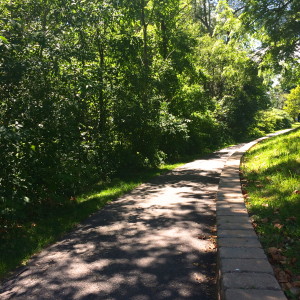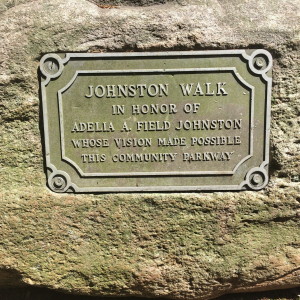Introduction to the Documents on the Oberlin Village Improvement Society

Source: R. Debus
After she retired from her positions as Dean of Women and Professor of Medieval History at Oberlin College in 1902, Adelia Field Johnston became more involved with the community of Oberlin as a whole. In 1903 she was one of about two dozen prominent Oberlinians who formed the Oberlin Village Improvement Society (OVIS) and in 1904 she was elected the society’s president, a position she held until her death.1 The Constitution of OVIS lists its goal as: “to improve the Sanitary Conditions, to promote neatness and order, and to do whatever may intend to improve the town and beautify it as a place of residence.”2 The turn of the century had seen a great swell of city beautification movements focused on improving the quality of urban living, and Johnston’s vast travel experience granted her a great deal of knowledge about such projects elsewhere.3 Her fundraising skills also came in handy, as the Society sought, under her direction, to not merely encourage citizens to beautify their own homes and businesses, but to create parks and other green spaces within the town. The society also had a moral component, which reflected both the contemporary belief that the goal of civic improvement was to create a more moral society. Johnston’s own experience with and dedication to promoting morality among the female students of Oberlin is evidenced in her General Exercise lectures.4

Johnston’s impact on the physical landscape of Oberlin included personally cleaning the yards of shopkeepers, master-minding the restoration of the local Plum Creek (which had long been used as a dumping ground) and heavily promoting residential beautification initiatives, but she was also responsible for the creation of a series of parks and paths, known as the Community Parkway, along the banks of Plum Creek.5 These include the Johnston Walk, a paved path running from the edge of the Oberlin Arboretum through the southern parts of Professor and Pleasant streets,6 and the small park on South Vine street, as well as protections for the Arboretum itself that allowed it to be maintained as a green space.7 In order to create these parks, some of which remain today, Johnston needed to obtain promises of both money and land. As the following letters show, while she had a great many advantages that aided her in this ultimately successful endeavor, gender discrimination still produced some complications.
3Christen, City Beautiful in a Small Town, 3.
4Christen, City Beautiful in a Small Town.
5Former Student File, Johnston, Adelia A.F. Box 539. Oberlin College Archives.
6grandmaR. “Oberlin Off The Beaten Path.” VirtualTourist.com. web address, accessed 30 July 2015.).
7Oberlin College Archives, Adelia A. Field Johnston Papers. Series I Biographical File, 1862-1994 (span). RG 30/19.